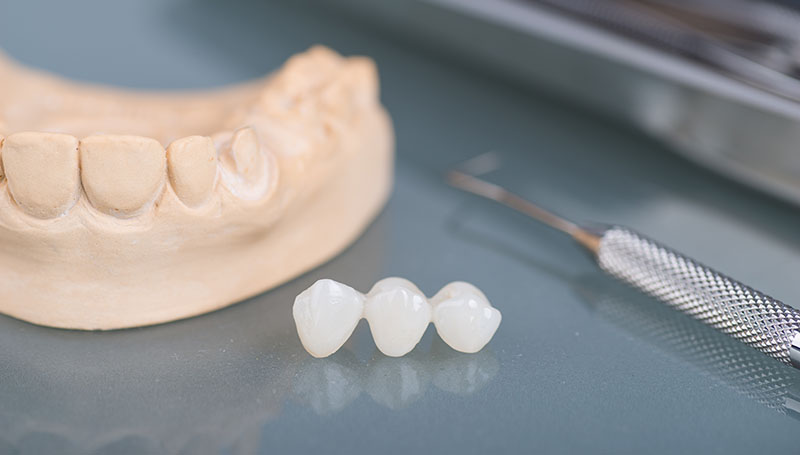
Leave a message

A dental bridge consists of a false tooth or teeth held in place by dental crowns, which are cemented onto abutment (connecting) teeth. Traditional bridges are the most common type of dental bridge and can be used when you have natural teeth on both sides of the missing tooth or teeth. It can also consist of one or more pontics (fake teeth) held in place by dental crowns.
Teeth are often lost or extracted due to decay, gum disease or accidents, but modern technology has allowed us to create fully functioning false teeth that look and work like natural teeth and can last for many years.
Missing several teeth can make daily functions challenging to manage, such as eating and speaking. Not only this, but gaps in teeth can lead to strain on the jaw and result in pain and discomfort.
Dental bridges help to bridge the gap between healthy teeth and can improve the following symptoms caused by missing teeth:
Dental bridges are made from several materials, but our practice offers explicitly ceramic bridges made with our advanced dental technology.
Our ceramic dental bridges come in four primary forms, namely:
Traditional: This is the most popular type of bridge we offer. The bridge or false teeth are connected to dental crowns that fit over healthy teeth on either side of the gap. These are also known as abutment teeth.
Cantilever: A cantilever dental bridge is half of a traditional bridge in that it only requires one natural tooth with a crown to be connected to the false teeth or bridge.
Implant-supported: This dental bridge uses dental implants topped with crowns that act as abutment teeth. There are two options for this type of bridge - either each missing tooth receives an implant to which the bridge is attached, or the bridge is suspended between two implants on either side.
Maryland: The Maryland dental bridge does not require crowns for the attachment. Instead, it uses metal or porcelain 'wings' fused to the bridge and the back of the natural, healthy teeth on either side
.Dr Borman will prepare the natural teeth on either side of the gap, take the necessary impressions and provide temporary individual crowns or a bridge while a ceramic bridge is being made by the dental laboratory.
During the second appointment, Dr Borman will cement the final bridge into position and adjust it as necessary.
Dental bridges can last 5 to 7 years with proper oral hygiene and daily care. Dr Borman will advise you on cleaning techniques and diet habits to look after your bridge. This, accompanied by regular dental visits, will ensure the longevity of your dental bridge.